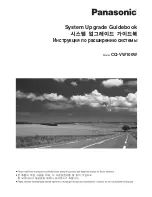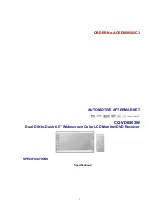
882
Mobile Extension - Callback to Cell Phone
Description
Callback to Cell Phone allows the user to make an incoming call to a system then hang up before the
system answers (like a one ring call), then the system calls back to the calling Cell Phone using a
pre-programmed number. The advantage is to reduce Cell Phone charges for calls on a mobile
extension system.
After receiving a call back on a Cell Phone, the user can call another extension or make an outgoing call
via the system using the mobile extension function.
Example
– Callback to Cell Phone
Conditions
Mobile Extension must be programmed for this feature to work.
In the Callback to Cell Phone feature set Program 15-22-04 to 1. If the Cell Phone user
continues to ring over the time set in Program 22-01-12, the system answers the call as a
normal Mobile Extension call.
Callback to Cell Phone will not proceed and no retry is made if all trunks are busy when
trying to callback.
Callback trunk routing follows Program 15-22-03 setting. When set 0 (Normal trunk access
code), ARS also can be used.
If Mobile Extension does not answer the Callback within time set in Program 20-01-16,
Callback will stop. If answered the within the Callback time, the user hears an extension
dial tone. A splash tone is not heard.
If the system receives a
“Disconnect” from the far end after a Callback is made, Callback
will stop.
When Calling party number is used, Callback follows the Program 21-19-01 outgoing call
setting of the Mobile Extension which made the outgoing call.
The Callback to Cell Phone feature is not supported when using an analog trunk.
Summary of Contents for Univerge SV9100
Page 1: ... SV9100 Features and Specifications Manual Rev 1 2 March 2016 ...
Page 64: ...64 Required Component s None ...
Page 238: ...238 Walking Code Restriction 663 ...
Page 239: ...239 Temporary Code Restriction Override service code be changed 775 ...
Page 285: ...285 Single Line Telephone 1 Lift the handset A fast busy is heard 2 Dial 759 3 Hang up ...
Page 332: ...332 Circular Routing Department Calling Circular Routing CALL 1 CALL 2 CALL 3 CALL 4 ...
Page 406: ...406 Trunk Distinctive Ringing Flow Chart ...
Page 407: ...407 ICM Distinctive Ringing Flow Chart ...
Page 442: ...442 CCIS Standard Calls ...
Page 447: ...447 CCIS VE Standard Calls ...
Page 456: ...456 CPN sent when making a 911 call across CCIS trunks from a terminal ...
Page 461: ...461 CCIS VE 911 Calls ...
Page 637: ...637 Cascade Message Notification Flow Chart 1 ...
Page 638: ...638 Cascade Message Notification Flow Chart 2 ...
Page 639: ...639 Cascade Message Notification Flow Chart 3 ...
Page 655: ...655 Cascade Message Flow Chart 1 ...
Page 808: ...808 DTI U40 ETU Programming Flowchart for ISDN PRI Answering Calls the GCD PRTA Overlap ...
Page 813: ...813 ...
Page 844: ...844 None Related Features None Guide to Feature Programming None Operation None ...
Page 915: ...915 Communications Interface feature for more ...
Page 916: ...916 ...
Page 917: ...917 Operation None ...
Page 948: ...948 Operation Normal call handling procedures for single line telephones apply ...
Page 1015: ...1015 Related Features None Guide to Feature Programming None Operation None ...
Page 1026: ...1026 Operation Refer to Central Office Calls Answering ...
Page 1030: ...1030 Multiline Room Monitoring ...
Page 1031: ...1031 Single Line Telephone Room Monitoring ...
Page 1146: ...1146 SMDR Flowchart Continued ...
Page 1147: ...1147 SMDR Flowchart Continued ...
Page 1371: ...1371 ...
Page 1400: ...1400 To answer off hook signaling 2nd call and 2nd caller disconnect the call NOTE ...
Page 1402: ...1402 SV9100 Features and Specifications Manual NEC Enterprise Solutions ...
















































